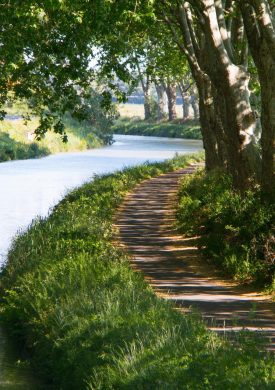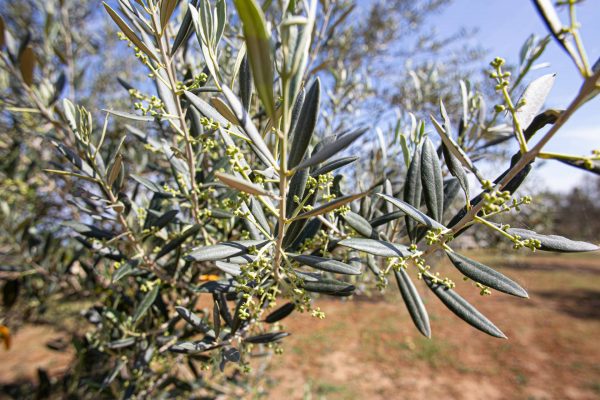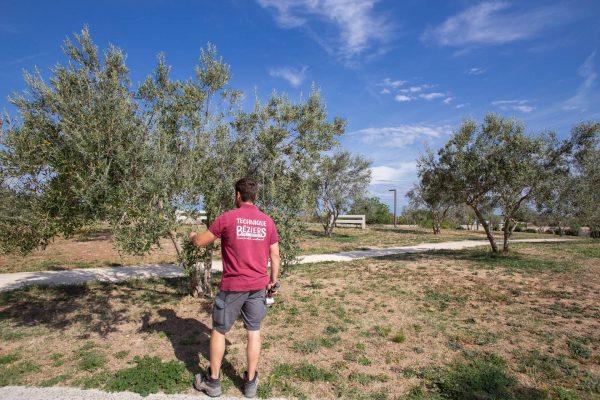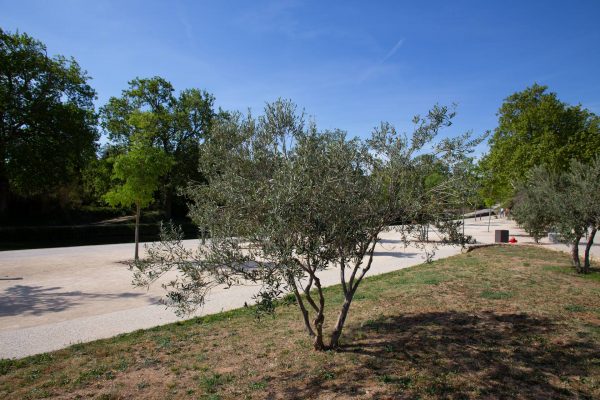At 9 écluses de Fonseranes there’s always plenty to see and do: the immersive cinema, the treasure hunt, the botanical trail… Now, thanks to Julian, discover the Fonseranes olive grove.
What you need to know about the Oliveraie de Fonseranes
Why plant olive trees at the 9 locks at Fonseranes?
Olive-growing is much older in the region than vine-growing. Planting olive trees in Fonseranes means putting the spotlight back on this ancestral crop, which has been neglected in favour of the simpler and, above all, more profitable vine.
In a few words…
The 200 olive trees at Fonseranes, the last of which were planted in 2022, make up the third largest olive grove in Béziers.
The olive trees planted at the 9 locks in Fonseranes are of the Verdale de l’Hérault variety.
Julian, the Fonseranes technical services team leader behind the project, hopes soon to be able to let us taste the olive oil from this grove.
To obtain a press of 1 litre of oil, you need to pick 6 to 8 kilos of olives.
A perfect place to take your time
The olive grove is ideally situated at the bottom of the 9 locks at Fonseranes. A picnic area invites you to stop for a few minutes to eat, of course, but above all to enjoy the view. Look up and you’ll see the Cathedral of Saint-Nazaire and Saint-Celsus in Béziers.
Fonseranes olive grove picnic area
Enjoy a moment of relaxation in the shade of the olive trees at Fonseranes.
The olive in our region
L’Histoire de l’olive dans la région biterroise
- 1596: There are up to 250 hectares of olive trees around the town of Sérignan.
- 1709: a terrible winter hit France and “destroyed” all the crops.
- 1776: Only 45 hectares of olive trees remained in the Béziers region.
- End of the 19th century: there were no more olive trees in the region. The Languedoc is a wine-growing region that can easily be industrialised. The wine produced was sold all over France and even abroad. Vine growing is therefore highly profitable.
- Today: knowledge of the olive tree and its fruit has been somewhat lost, but its cultivation is gradually re-establishing itself in the Béziers landscape.
Varieties of olives grown in the Béziers region
La Lucques
* The best known of all the olives grown in the region.
* Olive for tasting.
* Soft and supple.
* Shaped like a crescent moon.
La Picholine
* Firm and crisp on the palate.
* Its origins lie in the Gard region.
L’Amellau
* It’s an almond-shaped olive. Amellau means “almond” in Occitan.
* On the palate, it releases aromas of lychee and rose.
* It is ideal for tasting or in a stew.
Apart from these three, other varieties have also made the region famous, such as the Clermontaise, ideal for oil, and the olive trees found in the Aude, Pyrénées-Orientales and Gard regions.
Where can you enjoy olives in the Béziers region?
As an aperitif, in salads or in our dishes, olives are an essential condiment in Mediterranean cuisine. If you’d like to try some, we recommend you visit one of the many olive-growing areas.




























